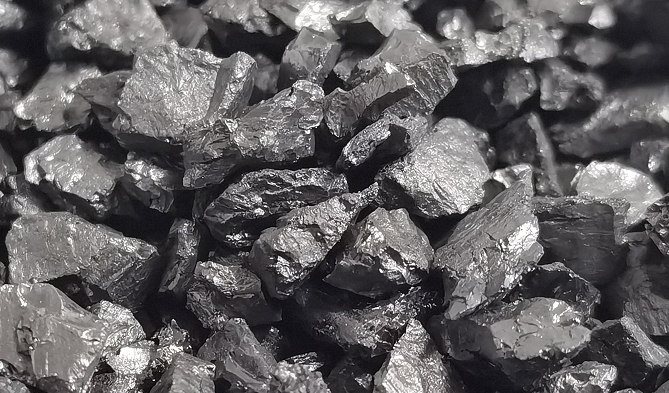
Electrically Calcined Anthracite or ECA is a material rich in carbon that's produced when anthracite coke is heated up to stabilize volatile elements. It is used as a carburizing agent for steel manufacturing.
In an EAF, metallurgical and anthracite coke provide the chemical energy needed to melt the steel. Rest of the energy comes from electric power which drives exothermic chemical reactions. In a BOS unit, the O2 is supplied by oxy-fuel combustion.

Anthracite is a hard, compact, dark-gray to black coal with high thermal conductivity. The geological alteration process that forms it is a long-term thermal change of bituminous coke. A high amount of fixed carbon is present in this raw material, which makes it valuable for many different applications. It is used in a number of applications, including gas treatment, sewage treatment, desulfurization and denitration, air separation equipment, and paint workshop.
In the EAF, a charge of scrap is melted by passing electrical power through an electrode assembly and creating an arc between it and the metal. After reaching a certain temperature, the scrap will melt into slag or liquid steel. Mechanically, the slag and steel are separated in the ladle.
Some steel grades such as pipeline grades require low levels of S to achieve good weldability and formability. This is caused by the exchange reactions between the liquid and slag. This is governed by the dissolved concentrations of S and Al in the steel, and the contents of CaO, Al2O3, and calcium sulphide (CaS) in the slag.
The type of coal and its composition determine the concentration of P. The concentration of P in slag is usually lower than that found in steel. The slag can contain too much P for the grade of steel being melted. In these cases, it is necessary to reduce the P content to acceptable levels before the steel can be manufactured.
Several EAFs of today use what's known as the "hot heels" which are liquid steels and slags from the prior heat that remain at the bottom of furnaces after tapping. In addition to preventing rephosphorization of the steel, this allows a smaller charge in the ladle. Magnesium lime, in the form of MgO alone or a combination of MgO with CaO is often added to slag to accelerate the melting reaction.
It is also common for reclaimed or obsolete scrap to be mixed with what is known as clean or virgin Fe units. It is common to mix high-quality scrap with clean or virgin Fe units. Electrically calcined anthracite can be added to the mix of charges in an EAF in order to assist with desulphurization by reducing the partition between P in the slag and that in the steel melt.

Write a Message